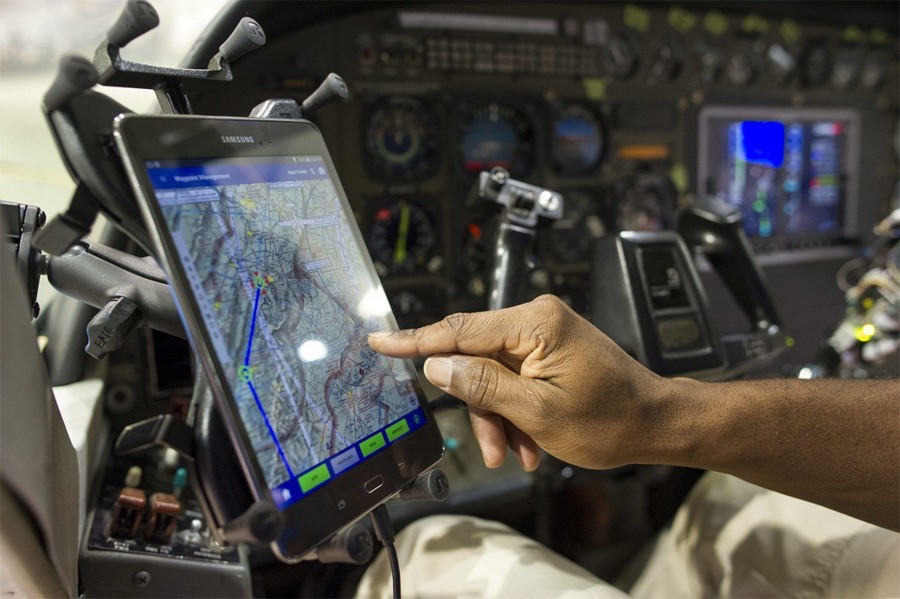Popular Reads
Top Results
Can't find what you're looking for?
View all search resultsPopular Reads
Top Results
Can't find what you're looking for?
View all search resultsRules tightened over foreign pilots in Indonesia
Change text size
Gift Premium Articles
to Anyone
F
oreign pilots are facing fresh restrictions on flying in Indonesia as the government has issued a regulation banning them from working for more than two years so that airlines must recruit unemployed local pilots.
The regulation, issued recently in the form of an official letter from the Transportation Ministry’s Directorate General for Air Transportation, became effective on Sept. 23. It made exceptions for foreign pilots with special skills, such as instructors, helicopter pilots and pilots operating in remote areas.
“We have a lot of unemployed local pilots. There is a large aspect of nationalism in this as it is about utilizing our own human resources,” the ministry’s airworthiness and operations director Mohammad Alwi said recently, although foreign pilots only account for 10 percent of the total number of pilots working in Indonesia.
More than 500 local pilots produced by the country’s 21 flying schools, two of which are operated by the government, can take positions currently filled by foreign pilots, he argued. The schools graduate 100 to 150 fresh pilots every year.
As of September this year, 455 foreign pilots had active validation to operate in the country, less than the 513 pilots last year, ministry data shows. Meanwhile, 128 foreign pilots were issued new validations so far this year, compared with 190 pilots last year.
The regulation emerged since the number of flights into and out of Indonesia has grown exponentially in recent years, with the International Air Transport Association (IATA) expecting the country to be the sixth largest market for air travel by 2034 with 270 million annual passengers. That has made airlines jack up flight frequencies, which has led to more pilots being required in the business.
The Deraya Flying School said competition with foreign pilots was not the only problem that hinders local graduate pilots from joining the workforces of airlines. The core issue, the school said, may be that they had to pay for licenses on their own, which can cost US$3,000 to $4,000 each, on top of the Rp 700 million to Rp 800 million flying school tuition fees.
“It’s difficult for the graduates,” Deraya Flying School public relations Eka Ariani Clausen said, referring to the license the pilot has to have to fly certain types of aircraft.
The flying schools generally do not equip graduates with the type of rating that allows them to fly aircraft like the Boeing 737, which is widely operated by airlines, as pilots are required to have more flying hours and experience before operating jets.
“I think we can’t just blame foreign pilots. Airlines also need to prioritize having local pilots work for them,” Eka said.
Edward Sirait, the president director of Lion Air, Indonesia’s largest private low-cost carrier, said his company recruited foreign pilots because local pilots lacked the specific aircraft rating required.
“New aircraft are coming in to meet passengers’ demand. Should we stop the aircraft from being delivered just because there are no qualified pilots?” he asked. Lion Air reached a $1 billion deal in 2014 with French turboprop manufacturer ATR for the purchase of 40 ATR 72-600 aircraft to be delivered from 2017 to 2019.
Fifty-three of Lion Air’s 700 pilots are foreigners, who are all captains, but some also serve as flight instructors. “Foreign pilots are more expensive and have more complicated hiring procedure. If we could get local pilots, why would we not hire them?” Edward said.
The rate of passenger growth on domestic flights in Southeast Asia’s largest economy reached 16.77 percent, for a total of 52.6 million, from January to August this year, compared with the same period a year ago, according to Central Statistics Agency (BPS) data. International flight passengers grew by 5.66 percent to 9.7 million.
“The inflow of new aircraft is also massive, but then preparing pilots takes a long time. Meanwhile, the airlines just focus on the target of getting 10 to 15 percent passenger growth,” said aviation expert Chappy Hakim, who calls the regulation as temporary because more measures to manage the pilots and their capabilities are required.
_______________________
To receive comprehensive and earlier access to The Jakarta Post print edition, please subscribe to our epaper through iOS' iTunes, Android's Google Play, Blackberry World or Microsoft's Windows Store. Subscription includes free daily editions of The Nation, The Star Malaysia, the Philippine Daily Inquirer and Asia News.
For print subscription, please contact our call center at (+6221) 5360014 or subscription@thejakartapost.com










